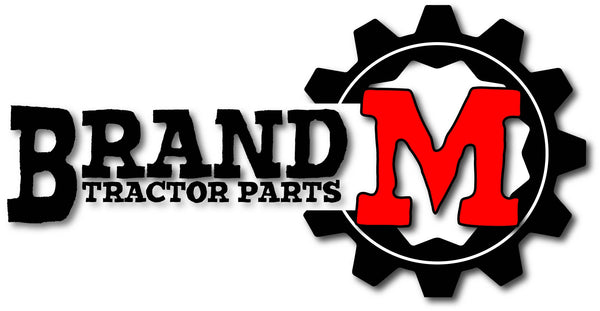Things To Consider When Adding A loader To Your Yanmar
A compact tractor with a front end loader can be one of the most useful pieces of equipment on your property. I often think to myself "how did I ever live without a front end loader in my life". That being said, there are some things you need to consider before adding a loader to your current tractor or even buying a tractor with a loader already installed.
The first consideration is cost. Adding a new loader to your old Yanmar can often cost almost as much as another used Yanmar tractor with a loader already installed. It might actually be worth just trading your tractor in on a similar model with a loader already installed. The good thing about keeping your old tractor, however, is that you know what you have. Trading for another used tractor can often leave you inheriting someone else's problems and those problems might be much worse that anything wrong with your current tractor.
Another consideration is weight. A loader (even empty) will add considerable weight to the front of the tractor. You need to be careful not to overload the front axles. We have seen dozens of customers over the years add a loader and head for a wet pile of sand only to find that their front spindles immediately broke off. Just because the loader will pick it up doesn't mean your tractor can handle it. I would strongly advise that you determine the maximum weight you will carry in your bucket and then set you loader's relief valve so that it will not lift any more weight than that. This will keep you from getting tempted to lift too much.
2wd vs 4wd. Trust me- no one likes pushing a shovel around any more than I do and ANY tractor with a loader is going to be less work than using a shovel. That being said, a 2wd tractor does have significant limitations compared to a 4wd. The problem is that, when you are using a loader, the pivot point is going to be your front axle. As you add weight to the loader, you remove weight from the rear axle.... the axle that actually moves the tractor.
I have actually got stuck in a dry gravel driveway when my 4wd quit working. I had pushed into a load of gravel and could NOT get enough weight off the front end in order to get traction on the rear wheels so that I could back out of the pile. Now, if I knew that I wasn't going to have 4wd available, I would have taken smaller bites of the pile but I'm just adding that as an example. 2wd beats a shovel any day but 4wd is a much better option if available.
The problem gets more exaggerated the smaller the tractor gets and also gets worse the farther away from the front bumper the loader is mounted. Try to keep the loader mounted so that it just barely misses the front bumper and hood in order to reduce the leverage the loader has on the rear axle.
Yes, you can add ballast to the rear but, if overdone, can create a lot of stress on the center section of the tractor which, on almost all Yanmar tractors, is the bellhousing. Those can/do break if you are not careful and this bring the next consideration....
The Bellhousing. Since almost all Yanmar tractors attach the rear of the tractor to the front with only the bellhousing, it is important that you install a loader with sturdy mounting points that spread the load as well as possible and not rely on the bellhousing. A subframe is best but not usually needed. A subframe is just a rigid steel frame that helps take the stress off the bellhousing by joining the engine mounts to the rear axle housing area. Those usually have to be custom fabricated.
Other considerations.
1)- Go slow. The heavier the load in your bucket- the slower you should be driving. Especially on rough ground. This helps reduce the strain on the axles and help prevent tipping over.
2)- Use 4wd Sparingly. A heavy loader adds lots of extra extra traction to the front axle. 4wd systems will always have small mismatches in ratios due things like to tire wear and tire pressures. When in 4wd, the front tires will always be going a slightly different speed than the rear but, with limited traction, these differences can be absorbed by the ground when the tires slip. If you use 4wd where it is not needed then the tires might not be able to slip and can bind up the drivetrain and cause serious damage. Use 4wd only when necessary- especially with a loader.
3)- Keep It Low! You want to keep the tractor's center of gravity as low as possible at all times. Only lift your bucket as much as absolutely necessary and lower it as soon as you are clear of any obstacles. A raised loader bucket drastically increases the risk of a rollover- especially on uneven ground or while driving. Be prepared to immediately lower the bucket if things get tipsy. When I'm doing something sketchy I actually say outload to myself "if this starts to tip I'm immediately pushing this lever forward to drop the bucket". Studies have proven that having a plan pre-loaded in your brain will shave off valuable seconds of response time.
Rollbars (ROPS). It is strongly recommended that you install and properly use a rollbar (ROPS) anytime you are using the tractor - especially if it has a loader.
There are certainly more thing to consider and I will probably add to this article in the future but this is a good start I think.
Looking for parts for your Yanmar tractor? We have a huge selection and offer same day economy shipping for just $4.99
